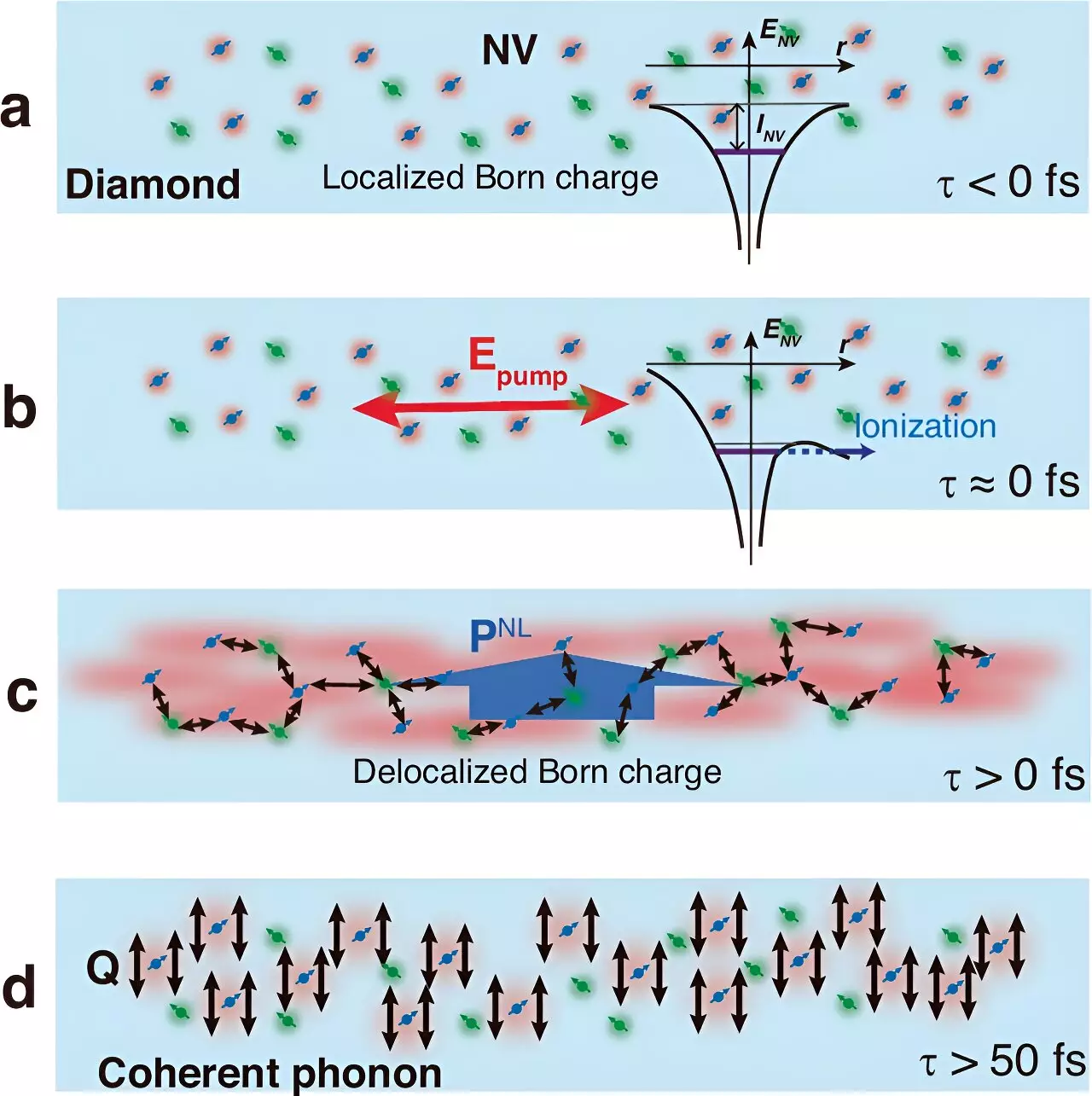Recent advancements in the field of quantum physics have unveiled extraordinary results concerning polaron quasiparticles and their cooperative behavior in diamond crystals, as detailed by a research group from the University of Tsukuba. This groundbreaking study, published in *Nature Communications*, focuses on the intricate interplay between electrons and lattice vibrations within diamonds hosting nitrogen-vacancy (NV) centers. By employing ultrashort laser pulses on these crystals, researchers were able to capture subtle changes in reflectance, leading to a greater understanding of the fundamental phenomena at play.
The presence of nitrogen impurities in diamond crystals plays a pivotal role in the creation of NV centers, where a vacancy next to a carbon atom manifests as a lattice defect often termed a color center. These NV centers are not just decorative flaws; their sensitive nature enables them to respond to environmental influences like temperature fluctuations and magnetic fields by altering their quantum states. This capability paves the way for developing advanced sensors characterized by high sensitivity and spatial resolution, making NV centers valuable for technological applications.
Despite prior knowledge concerning NV centers, the exact mechanism of how electrons interact with surrounding lattice vibrations remained elusive. The research team innovatively introduced nanosheets containing a controlled density of NV centers, which were then subjected to pulsed laser irradiation. This experimental setup provided new insights into how lattice vibrations are significantly amplified—a remarkable increase of approximately thirteen-fold was observed, indicative of the profound interactions between the crystal lattice and the quasiparticles generated by the NV centers.
A key outcome of this research is the revelation of a unique distribution of charges at the NV centers, discovered through a series of first-principles calculations. This analysis confirmed the existence of polaron quasiparticles, where a free charge carrier is accompanied by a phonon cloud—a concept that has seen little exploration in diamond materials until now. The study suggested that the elusive Fröhlich polarons could indeed emerge from the interactions within nanosheets hosting NV centers, shedding light on a previously debated existence in diamond structures.
The findings presented by the University of Tsukuba research team significantly broaden the horizons for quantum sensing applications utilizing NV centers in diamonds. By leveraging the cooperative dynamics of polarons along with the responsive characteristics of NV centers, a new class of sensors with enhanced performance could be developed. This innovation holds promise for various sectors, including telecommunications and materials science, where precision measurements are paramount. As researchers continue to unpack the complexities of these interactions, the applicability of quantum mechanics in practical technologies is poised to expand dramatically.

